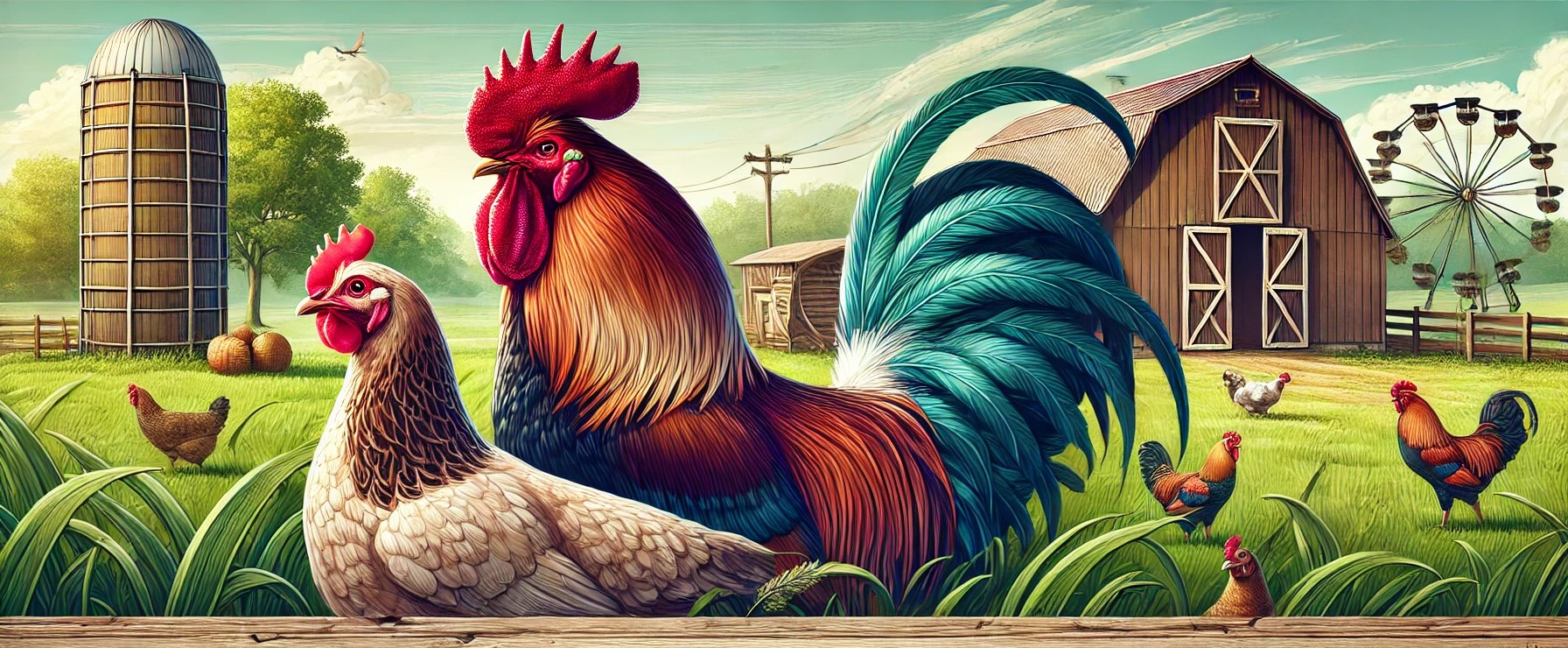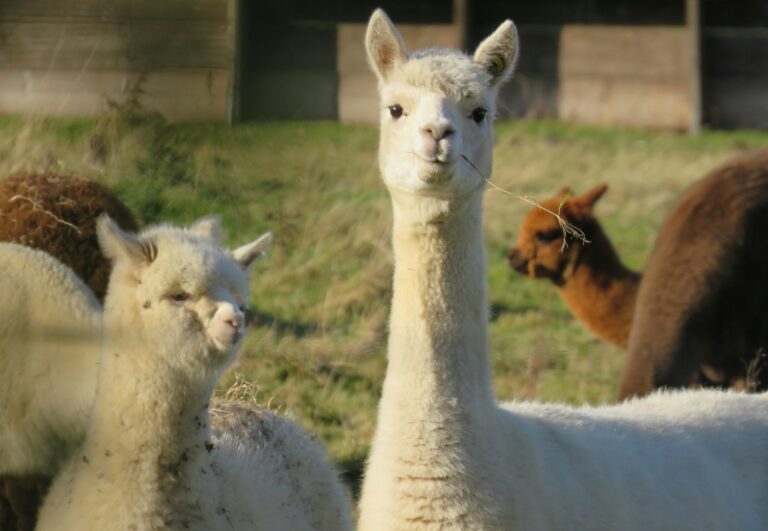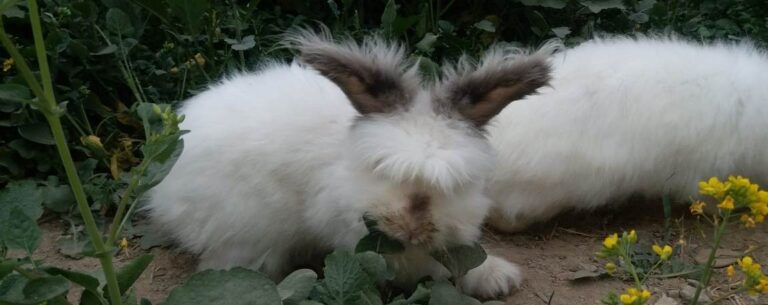Email: blogagri2@gmail.com
Hens vs Roosters: 10 Surprising Differences

Hens and Roosters have a plethora of differences some subtle while others are not and this blog is going to be all about the 10 key differences Hens vs Roosters that you might have never imagined before. From physical characteristics to behaviour, you’ll be given a chicken coop insight as if you were an expert yourself. From backyard flock owners to those who have a blooming curiosity in these avian friends, here’s what you’ll gain:
- Why roosters sport those magnificent combs and wattles
- The mystery behind a hens’ egg production skills
- How feather pattern differences can be evaluated
- An interesting look into how roosters can behave in a flock
Now you can take a deep breath and deliver big tasks to your fellow friends. Getting all your facts right is going to go a long way for you. This blog is going to explain all the hen and rooster details and insights that revolve around them.
Physical Appearance: Spotting the Differences
Bringing an end to chicken aesthetics and ushering in the informative domains, let’s go ahead and explore.
Size and Body Structure
Adult roosters are larger than hens of the same breed. They also stand up straighter than other chickens, which makes them more imposing in a flock. Older roosters usually have longer necks and legs. The reason why roosters tend to be more muscular than other birds is their wide chests and middle thighs. Muscles are very helpful in protecting the flock and during mating displays.
Comb and Wattle Variations
Let’s now change focus to the head. One of the major differences in chickens is the presence of combs and wattles. Untouched cocks have a large fleshy red feature on their heads that is considerably larger than a hen. In nature, roosters get a lot more showing off than cocks. The type of headgear they possess solely depends on their breed, for instance; there are simple and multiple rose and pea headgears for birds.
Hens usually have a quite modest style in that regard, combining smaller combs that serve as additional decorations which compliment their overall look in place of being used as prominent features.The same applies to wattles, which are the dangling things hanging beneath the chin. They usually go unnoticed in hens, but are accentuated greatly in roosters.
Feather Distinctions
This is where it gets super fun – feathers! Roosters and hens have particular feather characteristics that sets them apart.
The saddle feather is one such feature that is particular to a certain gender. These are the feathers located on the middle part of the back just above the tail. In roosters, saddle feathers are long, narrow, and very colorful. They fan out along the sides like a fancy saddle and so they are called.
💡 Key Takeaways: Roosters usually have bigger bodies, bigger combs and wattle, and also possess distinctive saddle and tail feathers which hens do not have, therefore, the physical appearance provides a pointer of sex in a chicken.
Behavioral Traits: Roosters vs. Hens
Have you ever observed a herd of chickens and thought they all act in a completely different manner ? Lets dive deep into the amazinig chicken culture and discover what really differentiates hens and roosters.
Roosters as Protectors
Now Just Imagine, you are having a perfect day in your backyard and suddenly your rooster starts to crow very loudly while also expanding his body and puffing out his feathers. What could be happening? Well, what you are witnessing is a good rooster!
That is right, we can easily see how important role roosters play, when it comes to protecting its flock. They sure are the protectors of the chicken world, always with undivided attention looking for danger. So, what else can a vigilant rooster do:
- – Scan the sky for predators
- – Alert the flock with specific calls when danger is near
- – Stand between the hens and perceived threats
- – Even engage in fights to defend their flock
An instinct which ensures that their backyard flock is well cared for is this protecting behavior that they possess.
Hens and Egg-Laying Behavior
t’s time to speak of the ladies who reside in the coop. The behavior of hens, particularly when it comes to the act of laying eggs, consists of distinct parts.
Have you ever heard of a broody hen? A broody hen is a hen that wants to become a mother and it is quite a fascinating thing! A broody hen will sit on her eggs or even an empty nest for many many hours in a row, hardly moving or eating. You can tell she has a purpose.
But not all hens go broody. Many are content to be egg-popping pets, reliably laying eggs without the desire to hatch them. These hens might:
- – Seek out quiet, secluded spots to lay their eggs
- – Perform a distinctive “egg song” after laying
- – Return to the same nesting box day after day
Social Dynamics in the Flock: Roosters vs. Hens
Chickens, like many social animals, have a complex social structure known as the pecking order. This hierarchy determines who gets first dibs on food, water, and the best roosting spots.
In a mixed flock:
- – Roosters often take the top spots in the pecking order
- – Hens establish their own hierarchy among themselves
- – Younger or weaker birds typically end up at the bottom
Understanding this pecking order is crucial for meeting chickens’ needs. It helps ensure that all birds in the flock have access to resources and reduces stress and conflict.
💡 Key Takeaways: Roosters exhibit protective behaviors and often lead the flock, while hens focus on egg-laying and may become broody, with both genders participating in a complex social hierarchy known as the pecking order.
Roles in Reproduction
When it comes to making more chickens, both hens and roosters have crucial roles to play. Let’s crack open this egg-citing topic and explore how these feathered friends contribute to the circle of life!
Rooster’s Role in Fertilization
Imagine a mature rooster doing a funny little dance, picking up bits of food, and calling the hens over. This charming display is called “tidbitting,” and it’s all part of the rooster’s role in reproduction. Here’s how roosters contribute to making those fertilized eggs:
- – They perform mating dances to attract hens
- – They fertilize the eggs internally before the hen lays them
- – Their presence can stimulate egg production in hens
Fun fact: A single mating can fertilize several eggs over a period of days or even weeks!
Hen’s Egg-Laying and Incubation
Now, let’s talk about the incredible job hens do. They’re not just egg-laying machines; they’re potential mothers too!
Here’s what goes into a hen’s reproductive role:
- – Laying eggs: Hens can lay eggs with or without a rooster present. However, without a rooster, these eggs won’t be fertilized.
- – Becoming broody: Some hens develop a strong urge to hatch eggs. They’ll sit on their nest for about 21 days, barely eating or drinking.
- – Hatching: If the eggs are fertilized, the hen will keep them warm and turn them regularly until they hatch.
- – Caring for chicks: Once the eggs hatch, a broody hen becomes a devoted mother, protecting and teaching her brood of chicks.
It’s amazing to think that each little egg has the potential to become a fluffy chick, isn’t it?
💡 Key Takeaways: In reproduction, roosters are responsible for fertilizing eggs through mating, while hens lay eggs, incubate them if broody, and care for the resulting chicks, showcasing the complementary roles of both genders in chicken reproduction.
Growth and Development
From tiny fluff balls to full-grown chickens, the journey of growth and development in roosters and hens is truly fascinating. Let’s explore how these feathered friends transform as they grow up!
Early Stages: Chick to Juvenile
Picture a group of newly hatched chicks – all adorably fluffy and chirping away. At this stage, it’s nearly impossible to tell which will become roosters and which will be hens. These baby chicks are what we call “straight-run chicks,” meaning their gender hasn’t been determined yet.
Here’s what happens in those early weeks:
- – Days 1-7: Chicks are all fluff and cuteness, focusing on eating, drinking, and staying warm.
- – Weeks 2-4: Feathers start to replace fluff, and chicks become more active.
- – Weeks 5-8: Juvenile feathers come in, and personalities start to emerge.
During this time, both male and female chicks grow at similar rates. It’s like nature’s way of keeping us guessing!
Maturity Milestones
As chickens grow older, the differences between roosters and hens become more apparent. This process is called sexual dimorphism, where males and females of the same species look different.
Here are some key milestones:
- – 8-12 weeks: Combs and wattles start to develop, often more quickly in males.
- – 12-16 weeks: Roosters may attempt their first crow (though it might sound more like a squeak at first!).
- – 16-20 weeks: Mature roosters begin to show more pronounced physical characteristics like larger combs and longer tail feathers.
- – 18-24 weeks: Most hens start laying their first eggs.
It’s important to note that these timelines can vary depending on the breed. Some chickens mature faster than others, just like some kids hit their growth spurts earlier!
💡 Key Takeaways: Chicken growth progresses from indistinguishable chicks to juveniles showing early signs of gender differences, with full maturity reached between 16-24 weeks when sexual dimorphism becomes clearly evident in physical characteristics and behaviors.
Breed-Specific Differences
Just like dogs and cats, chickens come in a variety of breeds, each with its own unique characteristics. Let’s explore some popular chicken breeds and see how roosters and hens differ within these breeds!
Popular Breeds and Their Characteristics
Rhode Island Red Rooster
The Rhode Island Red is a classic American breed known for its hardy nature and rich, reddish-brown feathers. Here’s what makes a Rhode Island Red rooster stand out:
- – Larger and more muscular than hens
- – Deep red to almost black plumage
- – Prominent red comb and wattles
- – Confident and sometimes territorial behavior
Rhode Island Red hens, in comparison, are slightly smaller with a more subdued reddish-brown color.
Plymouth Rock Rooster
Plymouth Rock chickens, also known as Barred Rocks, are another popular breed. The Plymouth Rock rooster is a handsome fellow with some distinct features:
- – Black and white barred pattern on feathers
- – Larger size compared to hens (about 7.5 lbs vs 6.5 lbs for hens)
- – Single, upright red comb
– Long, flowing tail feathers
Plymouth Rock hens share the barred pattern but have a more rounded body shape and smaller comb.
Rare and Unique Breeds
While Rhode Island Reds and Plymouth Rocks are well-known, there are some fascinating rare breeds of chickens that showcase extreme differences between roosters and hens:
- – Serama: The world’s smallest breed of chicken. Roosters are incredibly tiny but still maintain their protective instincts.
- – Ayam Cemani: An all-black chicken breed where even the meat and bones are black! Roosters have more exaggerated combs and wattles.
- – Silkie: Known for their fluffy, fur-like feathers. Roosters of this chicken breed often have multiple spurs on their legs.
These unique breeds show that while general differences between roosters and hens exist across all chickens, some breeds take these distinctions to the extreme!
💡 Key Takeaways: Different chicken breeds exhibit varying degrees of sexual dimorphism, with popular breeds like Rhode Island Reds and Plymouth Rocks showing typical rooster-hen differences, while rare breeds can display more extreme variations in size, color, and features between genders.
Determining Gender in Chickens
One of the most asked questions by chicken enthusiasts is, “How can I tell if my chick is a rooster or a hen?” Let’s explore some methods used to determine the sex of your chicks!
Visual Sexing Methods
Wouldn’t it be great if chicks wore little pink or blue booties? While that’s not the case, there are some visual cues that can help determine gender:
Auto-sexing Breeds
Some clever chicken breeders have developed auto-sexing breeds. These chickens have gender-specific color patterns right from hatching. For example:
- – In Cream Legbars, male chicks have a white spot on their heads, while females don’t.
- – California Greys have different down colors for males and females.
Sex-linked Coloration
Another method involves crossing specific breeds to produce chicks with sex-linked coloration. For instance:
- – When a Rhode Island Red rooster is crossed with a Barred Rock hen, male chicks are white and females are black.
- – This color-linked sexing method is about 80% accurate at hatch.
Professional Sexing Techniques
For those seeking a more accurate assessment method, professional chicken sexers use specialized techniques:
Vent Sexing
This is the main method used in commercial hatcheries:
- – It involves examining the chick’s vent (cloaca) for tiny differences in shape.
- – Requires extensive training and practice to master.
- – Can be up to 95% accurate when done by experts.
Feather Sexing
Some breeds can be sexed by examining wing feather development:
- – In day-old chicks, males may have shorter covert feathers compared to primary feathers.
- – This method is less reliable than vent sexing.
Challenges in Gender Determination
Despite these methods, determining the sex of your chick can still be tricky:
- – Many breeds don’t show clear gender differences until they’re several weeks old.
- – Some methods, like feather sexing, are only applicable to certain breeds.
- – Even experienced chicken keepers can sometimes be surprised by a hen that turns out to be a rooster!
Remember, patience is key. If you’re unsure, wait and watch. As your chicks grow, their true identities will reveal themselves through physical characteristics and behavior.
💡 Key Takeaways: While some visual methods and professional techniques exist for sexing chicks, including auto-sexing breeds and vent sexing, accurately determining a chick’s gender can be challenging and often requires patience as the bird matures and displays more distinct characteristics.
Nutritional Needs: Hens vs. Roosters
Just like humans, chickens need a balanced diet to thrive. But did you know that hens and roosters have slightly different nutritional requirements? Let’s peck into this topic and uncover the dietary distinctions between the ladies and gents of the chicken world!
Dietary Requirements for Hens
Hens, especially those laying eggs, have some special nutritional needs:
- – Higher levels of calcium: Laying hens need extra calcium to produce strong eggshells. Without it, they might lay eggs with thin or soft shells.
- – More protein: Egg production requires a lot of protein, so laying hens need about 16-18% protein in their diet.
- – Variety of nutrients: Vitamins A, D, E, and B complex are crucial for egg production and overall health.
Here’s a fun fact: Some chicken keepers offer crushed oyster shells as a calcium supplement. It’s like a chicken’s version of a calcium chew!
Rooster Nutrition
Roosters, on the other hand, have slightly different needs:
- – Lower calcium requirements: Since they’re not laying eggs, roosters don’t need as much calcium as hens.
- – Balanced protein: About 14-16% protein is usually sufficient for adult roosters.
- – Energy-rich foods: Roosters are often more active, so they benefit from foods that provide sustained energy.
Both hens and roosters in your backyard flock will thrive on a good quality chicken feed. However, it’s important to choose the right type:
- – Layer feed for laying hens
- – All-purpose poultry feed for roosters and non-laying hens
Remember, treats should make up no more than 10% of your chickens’ diet. Too many treats can lead to nutritional imbalances – it’s like letting kids eat only candy!
💡 Key Takeaways: While both hens and roosters require a balanced diet, laying hens need higher levels of calcium and protein for egg production, whereas roosters can thrive on a more standard poultry feed with lower calcium content.
Practical Considerations for Chicken Keepers
So, you’re thinking about becoming a chicken keeper? That’s egg-citing! But before you dive into the world of backyard chickens, there are some practical things to consider. Let’s scratch the surface of what it takes to care for these feathered friends.
Space and Housing Requirements
Chickens need a safe area to call home. Here’s what to keep in mind:
- – Coop size: As a rule of thumb, allow 2-3 square feet per chicken inside the coop.
- – Run space: Aim for at least 8-10 square feet per chicken in the outdoor run.
- – Roosting bars: Provide 8-10 inches of roosting space per bird.
- – Nesting boxes: One box for every 3-4 hens is ideal.
Remember, a well-designed chicken coop protects your flock from predators and harsh weather. It’s like building a tiny, feather-friendly fortress!
Time and Effort Investment
Keeping chickens is rewarding, but it does require dedication. Here’s a quick rundown of daily tasks:
- – Feeding and watering: Twice daily, morning and evening.
- – Egg collection: Once or twice a day.
- – Coop cleaning:
Read Also: Angora Rabbits: The Source of Finest Wool
Conclusion
As we wrap up our journey through the fascinating world of hens and roosters, it’s clear that these feathered friends are more complex than meets the eye. Whether you’re a seasoned chicken keeper or considering embarking on this rewarding adventure, understanding these differences is crucial for maintaining a healthy and harmonious flock. Remember, every breed has its own charm, and the choice between hens and roosters depends on your specific needs and local regulations.







